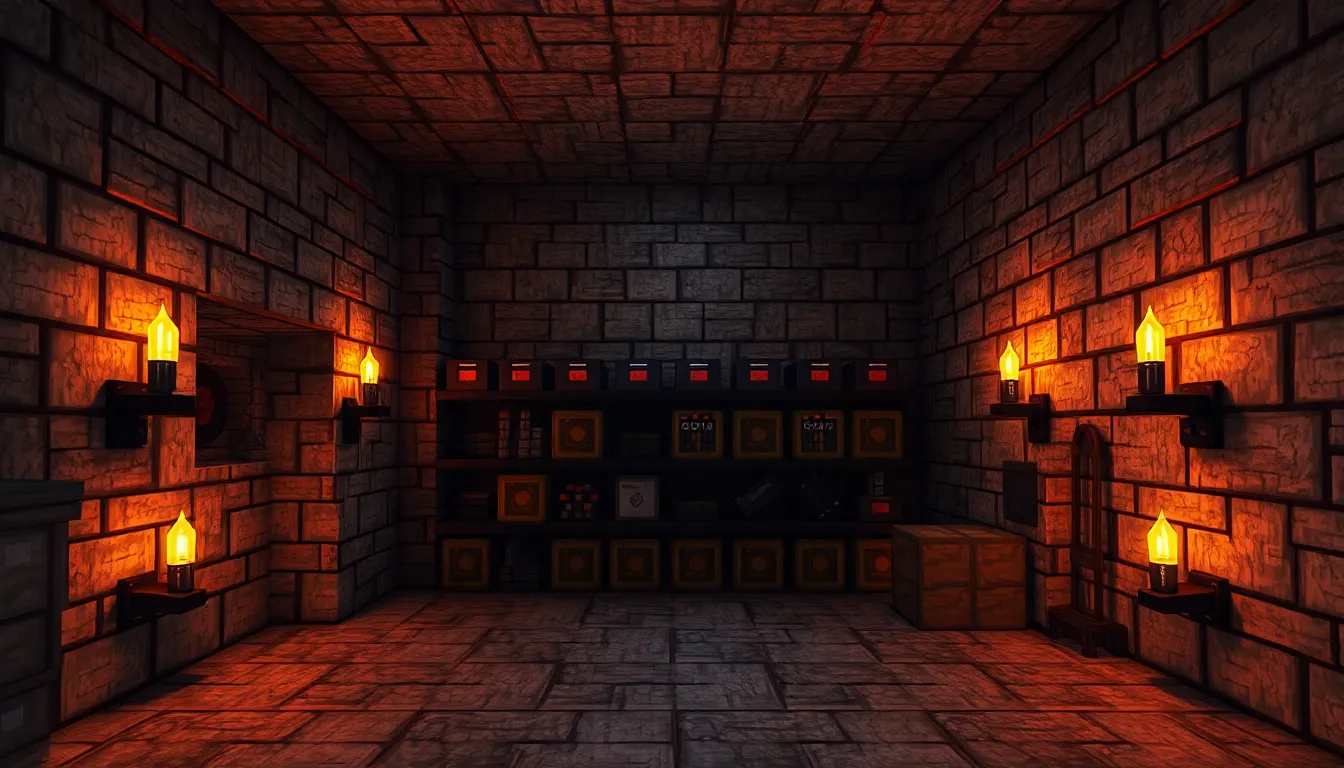In the pixelated world of Minecraft, survival isn’t just about gathering resources; it’s about creating a fortress that screams, “I mean business!” Enter the Minecraft bunker—a player’s ultimate hideaway where creativity meets strategy. Whether it’s fending off pesky mobs or just wanting a cozy spot to sip virtual cocoa, a well-designed bunker can turn the tides of any adventure.
Minecraft Bunker
A Minecraft bunker is a player-created structure designed for protection and utility within the game. Players utilize these bunkers as safe zones to avoid enemy attacks and environmental hazards.
Efficiency defines a well-constructed bunker, which typically includes essential resources like food, weapons, and tools. Layering materials, such as stone or obsidian, enhances durability, making it hard for hostile entities to penetrate.
Functionality extends beyond mere shelter. Bunkers often feature creative elements like hidden doors, traps, or automated defense systems. Incorporating a crafting table and furnace allows players to easily prepare food and create items while inside.
Designing a bunker varies by player preference, with styles ranging from simple underground hideouts to expansive, multi-level fortresses. Each design helps facilitate a unique gameplay experience, adapting to specific needs, like housing villagers or storing valuables.
A properly executed Minecraft bunker can serve as a central hub for exploration and adventure. Players return here for rest and reinforcements, ensuring they remain equipped for challenges ahead.
Investing time in bunker creation contributes significantly to overall game success. By establishing a secure base, players reduce the likelihood of losing valuable resources during intense encounters.
Why Build a Bunker in Minecraft?

Building a bunker in Minecraft provides essential protection and enhances gameplay strategies. Players gain unique advantages through well-designed structures that prioritize safety and efficiency.
Safety from Mobs
Bunkers offer safety from hostile mobs. Players create fortified spaces that shield them from creatures like zombies, skeletons, and creepers. A secure entrance minimizes risks of mob invasions while utilizing blocks like stone or obsidian enhances durability. Strategic lighting prevents mob spawning in nearby areas, ensuring a safe retreat during the night. With hidden traps and clever design, players can deter invaders effectively, allowing them to focus on gathering resources and completing objectives without fear of attacks.
Survival Strategies
Building a bunker supports essential survival strategies. Players stock essential supplies, including food, tools, and weapons, ensuring readiness for challenges. An organized layout facilitates quick access to resources, maximizing efficiency during gameplay. Multi-level designs allow for different functions, such as storage, crafting, and resting. Automation features, like redstone traps and automatic doors, provide additional layers of security while enhancing gameplay dynamics. Bunkers also serve as central hubs from which players can explore the surrounding environments, encouraging adventure and experimentation.
Essential Features of a Minecraft Bunker
A Minecraft bunker requires key features that enhance protection, efficiency, and functionality for players. Incorporating these elements leads to a more effective and enjoyable gaming experience.
Storage Solutions
Efficient storage solutions play a crucial role in a bunker’s design. Chests and barrels allow players to organize resources like food, tools, and materials for crafting. Players often use labeled storage systems to simplify access to specific items. Moreover, utilizing hidden compartments increases storage space while maintaining a tidy appearance. Expanding storage capacity through vertical designs maximizes limited room, ensuring essential supplies are easily reachable during emergencies. Crafting stations can integrate storage, allowing players quick access while crafting gear and items.
Defense Mechanisms
Defense mechanisms are vital for protecting a bunker from hostile threats. Reinforced walls using stone or obsidian provide critical durability against attacks. Implementing traps, such as hidden pitfalls or arrow dispensers, can deter enemies from breaching the bunker. Players often install secure entrances with mechanisms like pressure plates or redstone doors to enhance safety. Strategic lighting also prevents mobs from spawning close to the entrance. Automated defense systems, such as turrets or lava moats, further secure the space, allowing players to focus on gameplay without constant concern for intruders. Defensive strategies create a balance between security and accessibility, accommodating both protection and resource gathering.
Designing Your Ideal Bunker
Creating an ideal Minecraft bunker requires careful planning and design considerations. Players typically start by selecting a suitable location, favoring areas that provide natural cover or are hard for enemies to access. A central hub layout often works well, allowing for multiple rooms dedicated to different functions.
Storage is essential for a well-crafted bunker. Efficient storage solutions, such as chests and barrels, support organization. Players often label their storage systems to ensure easy access to resources. Hidden compartments can further maximize space.
For protection, implementing strong defense mechanisms is crucial. Reinforced walls, fending off hostile mobs, form the first line of defense. Secure entrance designs, like concealed doors or traps, help deter intruders. Lighting plays a vital role, as strategic placement prevents mob spawning. Players can use torches or glowstone to create well-lit spaces without sacrificing aesthetics.
Automation enhances functionality and security. Automated systems like turrets and dispensers guard entrances, providing an extra layer of safety. Players often incorporate redstone mechanisms for advanced traps and alarms. These features allow them to focus on gameplay without constant worry about threats.
Flexibility in design also matters. Multi-level layouts support varied functions, enabling storage, crafting, and resting areas in a compact space. Creative design elements, like waterfalls or secret passages, can add flair while maintaining utility. Ultimately, an ideal bunker blends security, efficiency, and creativity, enhancing the overall gaming experience.
Conclusion
Building a Minecraft bunker is essential for any player looking to enhance their survival experience. It provides a safe haven against hostile mobs and environmental threats while offering a space for organization and creativity. The right design can turn a simple hideout into a multifunctional fortress that supports various gameplay strategies.
Incorporating features like efficient storage, reinforced defenses, and automation not only boosts security but also enriches the overall gaming experience. A well-crafted bunker allows players to focus on exploration and resource gathering without the constant worry of attacks. Ultimately, investing time in bunker design can lead to greater success and enjoyment in the expansive world of Minecraft.



